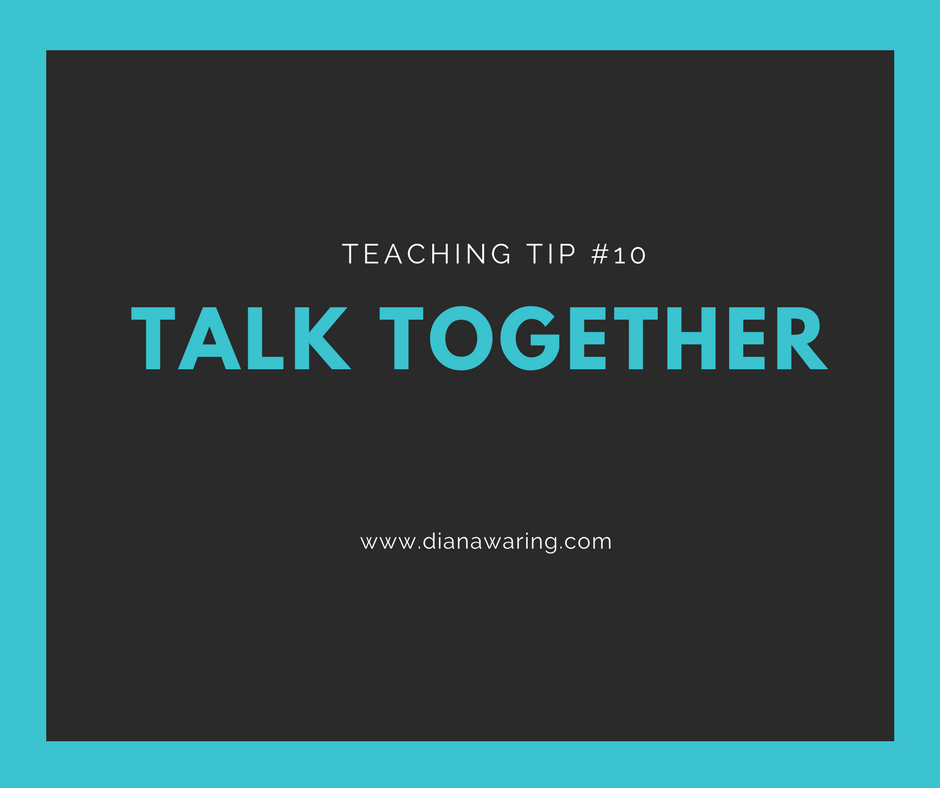Let’s talk about talking, shall we?
Have you noticed that some people are “natural” talkers? They effortlessly put together words and ideas whenever the opportunity arises. For these people, whether young or old, discussion is easy, free-flowing, and not always deeply considered. They simply say whatever comes into their minds
There are others who find it harder to talk at the drop of a hat. They need time to process their thoughts, consider the issues, ponder the possibilities. Though they do not speak up as quickly in a discussion, when they do eventually engage, it is often with profound insights and reasoned thoughts.
Two Different Approaches
You probably have both types in your home—and it may have been challenging for you. If you find it easy to talk on any subject, it may seem like your less verbal child is not trying—not engaging—when it comes to discussion. And it’s frustrating! If, on the other hand, you need time to think before you speak, it may be difficult to enjoy the chatterbox in your home. Either way, you may be tempted to “fix” your child to make them more like you.
I know I did.
As one who is endowed not only with the gift of gab, but with a need to process things verbally, I struggled when some of my children required more time to consider their answers. Why couldn’t they all just jump into the discussion at hand? Talking is easy, right??
Over time, though, I began to recognize that those who took more time before answering often brought a depth of understanding that was far beyond my expectations. And that helped me gain a deeper appreciation of the value of “internal processing” for these children.
Honoring Both Approaches
So, when it comes time to discuss what is being studied, it is helpful to create a welcoming and appreciate atmosphere that honors both approaches. Teach your kids to not talk over the quieter ones, but to graciously wait for the insights they will bring. And, enjoy the spontaneous talkers in your midst. Both types are incredibly valuable—they will enrich our lives, our homes, our communities, and, eventually, our world!
For those using my History Revealed curriculum, when it comes to the Talk Together section in Phase 1 (after the introductory article and listening to the CDs), give your students the opportunity to look through the discussion questions beforehand. Then, let them choose which question (or questions) they would enjoy discussing together. Good discussion at this point can foster a sense of creativity and wonder as students actively engage their own thoughts and opinions about the time period.
Ground Rules
Here are some ground rules for students in the class discussion: take turns speaking, listen to each other carefully, don’t use sarcasm or demeaning language towards someone with a differing opinion. If we give each other a chance to speak without fear of ridicule, we may hear some treasures! If someone’s idea is not clearly stated, respectfully ask questions until the meaning is understood.
Here are some considerations for parents/teachers as they moderate the class discussion (excerpted from the Teacher’s Guide, Page XVI):
See yourself as the moderator of the discussion, seeking to keep it positive, interesting, and creative; allowing students to interact; encouraging further thought without giving lengthy answers. In pursuing this activity in the Introduction Phase, we are still developing a sense of wonder that will propel the students through the rest of the Unit.
You don’t have to have all the answers—neither do they. The point of this exercise is to help students to suddenly realize, “Wow! I’ve never thought of that before. . . I wonder why. . .” Once they’ve done that, they will begin to dive into the information, looking for the answers to their own questions!
And that, my friends, is powerful.

